Alaska Native Alissa White feeds her son. (Courtesy photo)
First Foods
How Breastfeeding Could Turn the Tides on Maternal Mortality for Native Mothers and Their Babies
Indigenous lactation consultants are fighting to reclaim breastfeeding as a ceremony while tackling one of Indian Country’s most fundamental health challenges.
Story by Elyse Wild
PETOSKEY, Mich.—When Alissa White gave birth at home in May 2020, her newborn son was immediately rushed to the hospital. When the Tlingit mother waited anxiously in the emergency room, separated from her child due to early pandemic protocols, she asked for a breast pump.
“Even in that moment, in the flurry of everything that was happening, I (knew) I could start moving milk and be able to feed my baby in the way I was hoping,” White told Native News Online.
White’s single-mindedness in the moment came from the months she spent in a pregnancy support group led by a Native lactation specialist. Even though White’s baby couldn’t latch during his first week in the neonatal intensive care unit, she maintained a strict pumping schedule.
“I was pumping every two hours, waking up at night as though I had my baby physically there,” she said. “Because I started off the bat, I was consistent and dedicated and was able to have an abundant supply.”
For White, breastfeeding represents more than infant nutrition—it’s food sovereignty, ceremony and ancestral healing. Across Indian Country, Native women are working to restore these traditional practices that have been disrupted by generations of forced separation, assimilation and colonization.
“This is healing work,” Elizabeth Montez, a member of the Little Traverse Bay Band of Odawa Indians, who led White’s pregnancy support group, said. “It’s not just a food choice.”
Having Montez — one of just two dozen Native Americans with the rigorous International Board Certified Lactation Consultant (IBCLC) credential in North America — as both consultant and mentor was essential to White’s success.
“It gave me a solid foundation of what to expect,” White said. “Going into pregnancy and birth, I knew I wanted to breastfeed and it was good to have a realistic perspective of what that might look like. I think there is a perception of ‘Oh, if I am going to breastfeed, it’s just this natural thing, I’m going to be fine.’ But so many of us have been removed from that knowledge.”
The generational knowledge disconnect highlights the dual purpose behind bringing lactation support to Native communities: reclaiming breastfeeding as a cultural practice and ceremony and increasing positive health outcomes for mothers and babies.
Breaking the Cycle
Native American mothers and infants face alarming health disparities. According to a 2024 KFF brief on racial disparities in maternal and infant health, pregnancy-related mortality rates among American Indian and Alaska Native (AI/AN) women are more than three times higher than the rate for White women (63.4 vs. 18.1 per 1000,000 live births).
Angie Sanchez, a citizen of the Grand Traverse Band of Ottawa and Chippewa Indians and a Michigan State University doctoral student, sees breastfeeding support as a critical intervention in the crisis.
“It’s not second nature, it’s not like breathing,” she said. “Lactation is something you learn, and how we typically learn about that is by being a child around a mother who is breastfeeding, but a lot of us never had that.”
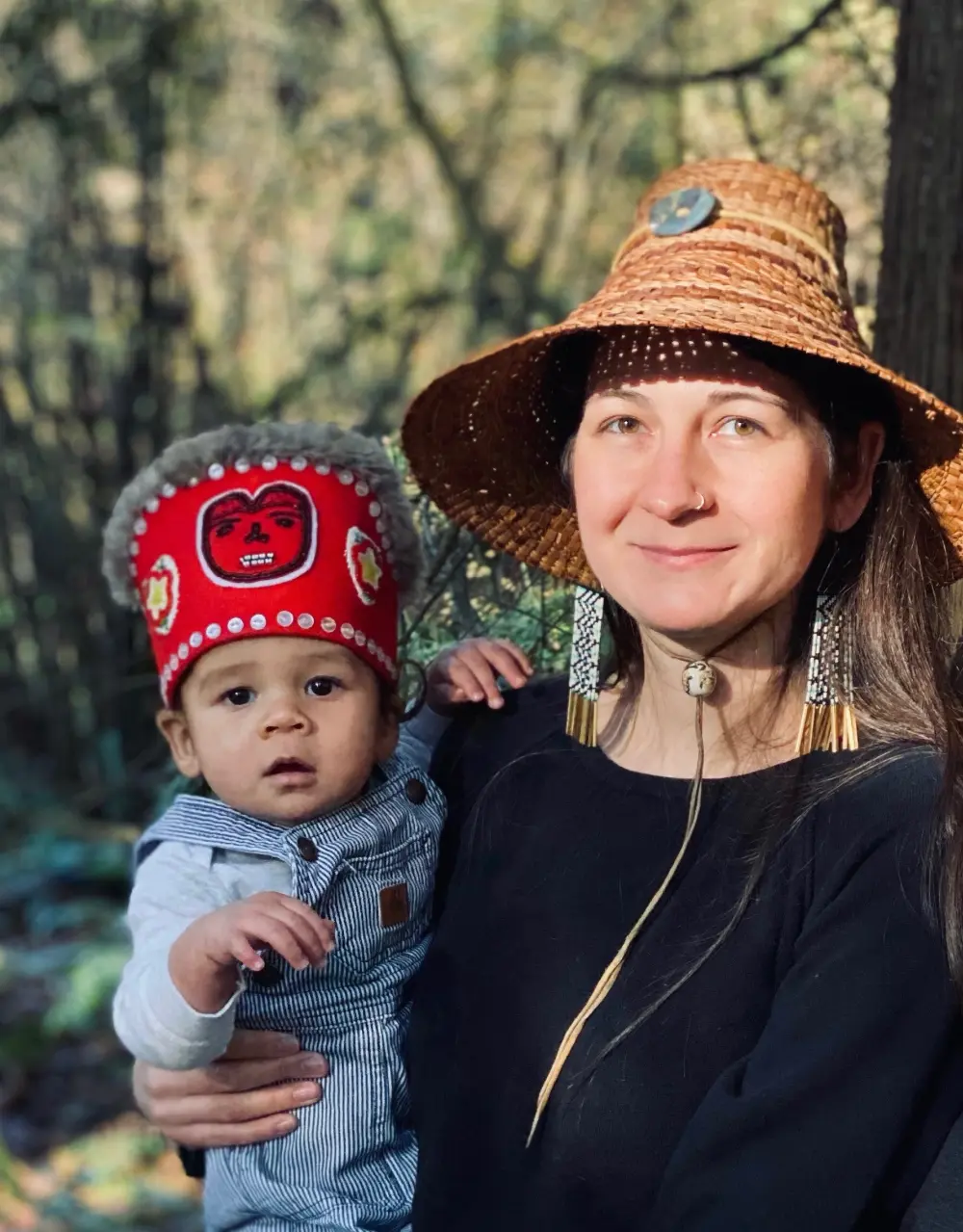
Alissa White said Native-led support she received during her pregnancy helped her know what to expect with breastfeeding. (Photo/Courtesy)
The KFF brief also shows that AI/AN infants have markedly higher mortality rates than those born to White people (9.1 vs. 4.5 per 1,000 live births). Breastfeeding is linked to lower rates of conditions that disproportionately affect Native communities, including sudden infant death syndrome (SIDS), respiratory infections, and diabetes.
Sanchez’s own struggle with breastfeeding illustrated how expert support can be for new mothers. Her newborn son had an undiagnosed tongue tie — a tissue condition that restricts tongue movement and makes it difficult for the baby to latch to the mother’s breast — causing weeks of painful nursing that she called “agonizing.”
After turning for help from everyone she knew — friends, family, her OB-GYN, her pediatrician — it was a certified lactation consultant who finally identified the problem. After a brief procedure in which her son’s frenulum tissue under the tongue was cut to release the tie, he was able to latch onto her breast normally.
“It was the first time in 12 weeks that I breastfed without being in pain,” she said.
The experience highlighted a major gap for Sanchez, who was living in Michigan’s capital city, East Lansing, with access to healthcare resources. She thought about the women on her reservation three hours away who didn’t have the same level of support.
“I was privileged to be able to stay home and take care of my baby,” she said. “And I had people around me for support — my husband stayed home for two weeks, my mom came to stay with me, I had friends stay with me. “I don’t know too many people who are able to do that … I felt a sense of responsibility to do something for my people.”
Nurturing Indigenous Solutions
In 2021, Sanchez channeled that sense of responsibility into action. She spearheaded the Nooni Project, a two-year initiative funded by the Michigan Health Endowment that sought to saturate the state’s Native communities with specially trained Indigenous Lactation Counselors.
Unlike mainstream lactation consultant certification, which requires hundreds of clinical hours and extensive coursework, the Indigenous Lactation Counselors program was created specifically for and by Native women. Developed by Cammi Goldhammer of Sisseton-Wahpeton Oyate, the 45-hour curriculum is free to Native participants and focuses on traditional Indigenous approaches to breastfeeding support.
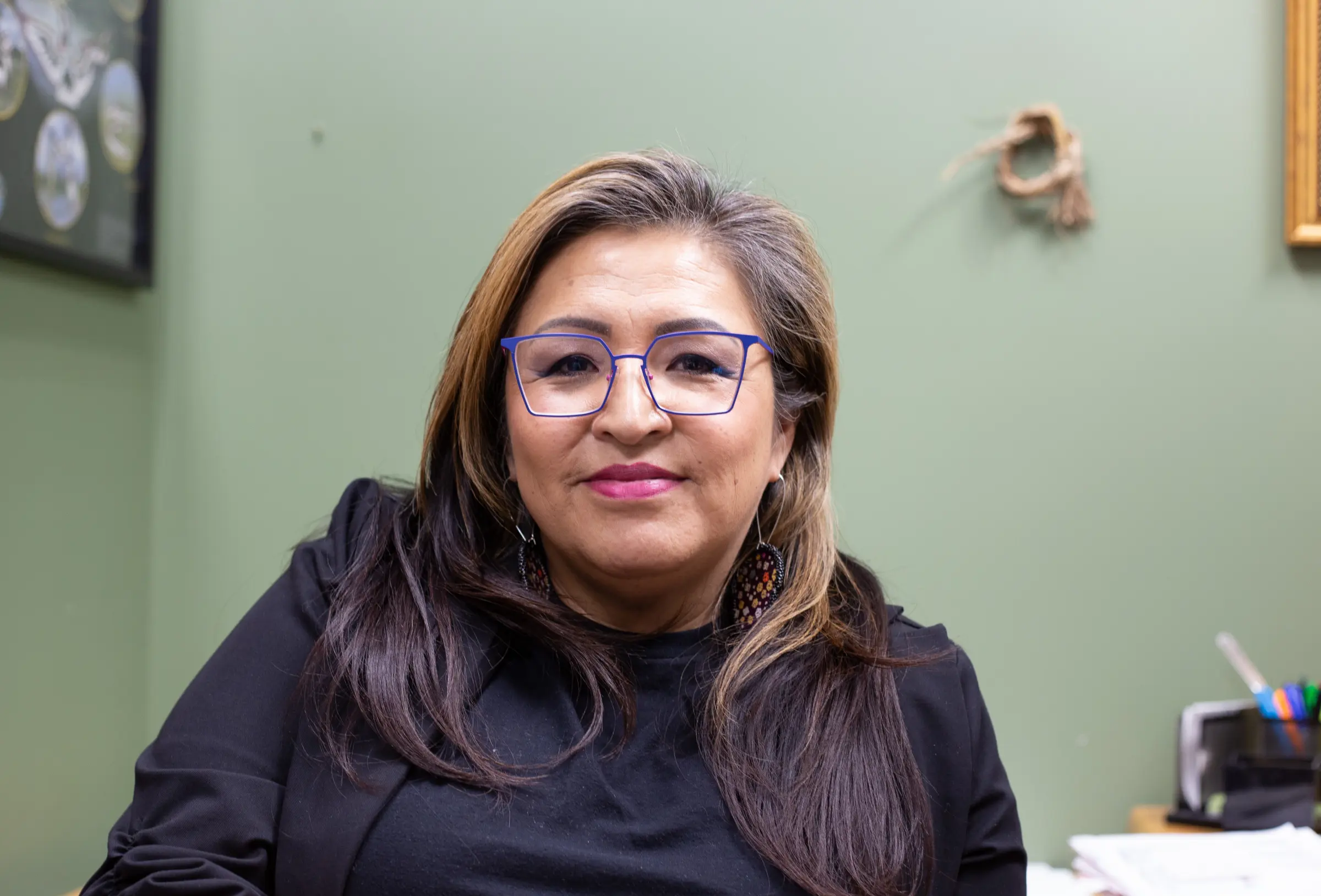
Angie Sanchez, a member of the Grand Traverse Band of Ottawa and Chippewa Indians and a doctoral student at Michigan State University, started a research initiative examining how colonialism disrupted breast feeding practices in Native communities. It also provided training for 60 Indigenous Lactation Consultants across the state of Michigan. (Photo/Elyse Wild)
The Nooni project proved remarkably successful, resulting in nearly 60 new lactation counselors from five of Michigan’s 12 federally recognized tribes.
“It’s so needed in our communities,” Sanchez said. “If there was a way to have this every year in every Indigenous community across Canada and the United States, we would all be much better. It’s really returning the ceremony of birth and the ceremony of breastfeeding back to our communities.”
This need becomes even more apparent when looking at the current landscape of lactation support. That's due, in part, to a lack of diversity among lactation care providers. A 2019 study conducted by the United States Lactation Consultant Association found that about 80 percent of certified lactation consultants are white, compared to the roughly 11 percent who are American Indian or Alaska Native.
The impact of these specialized Native lactation consultants extends beyond nutrition. While most private insurance plans must cover breastfeeding support under the Affordable Care Act, most Native families who rely on the Indian Health Service or Medicaid bear the out-of-pocket for breastfeeding support. Those costs can be prohibitive, with lactation counseling running from $150-$350 per session.
Even for those who are privately insured, only a handful of states license IBCLCs, and just one state, New Mexico, which has a Native American population of around 264,000, licenses and provides Medicaid coverage for IBCs.
According to the IHS website, it supports breastfeeding for the first six months of an infant's life. Eight of the 28 IHS hospitals across Indian Country are certified Baby-Friendly, a designation by UNICEF, meaning they exclusively promote breastfeeding; but it's unclear how many IHS facilities employ Indigenous Lactation Counselors.
Reclaiming Ancestral Wisdom
Dr. Yolandra Gomez, a pediatrician and enrolled member of the Jicarilla Apache Nation, describes breastfeeding as “the most important thing a mother can do for her baby.”
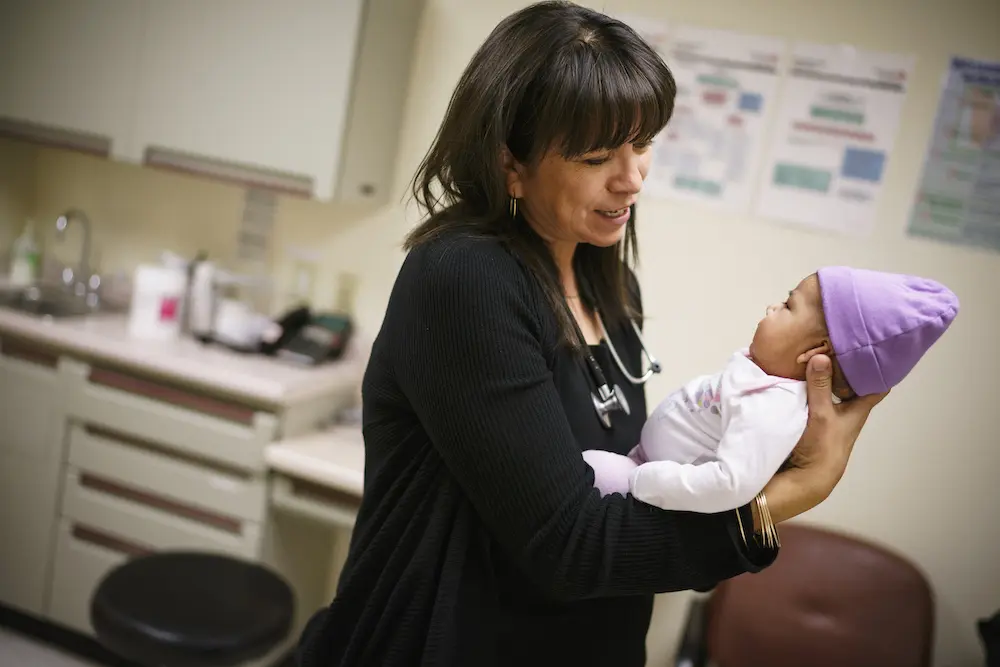
Dr. Yolandra Gomez is the project director for her tribe’s Maternal and Early Childhood Home Visiting Program. She says physicians need to provide more information to pregnant mothers about the realities of breastfeeding. (Photo: Craig Fitz for Associated Press; licensed)
Working as the project director for her tribe’s Maternal, Infant and Early Childhood Home Visiting Program, Gomez educates patients about breastfeeding’s many benefits: It’s a fresh, accessible food that doesn’t need to be stored or heated up. It reduces cortisol levels — stress hormones — in both mothers and babies. And it’s filled with therapeutic agents that protect against infection.
While she recommends breastfeeding for her patients, it may not work for everyone.
“And that’s OK,” she said. “I don't want to vilify a woman who doesn't want to breastfeed for her personal reasons. I'll always respect a family's decision to breastfeed or not breastfeed.”
Gomez wants more physicians to have candid conversations with their pregnant patients to prepare them for the changes and challenges that come with breastfeeding.
"A lot happens when a woman gives birth," she said. "There is so much excitement, and of course, it's tiring. There are misconceptions that breastfeeding should just happen naturally and easily, and it doesn't.”
A woman's body doesn't start fully producing milk until 3-4 days after birth; instead, breasts produce colostrum, sometimes referred to in maternal health spaces as “liquid gold.” It's nutrient-rich and essential in the early days of life as it prepares the baby's immune system for regular breast milk; but colostrum is produced in small volumes, leading many women to worry they aren't producing enough milk to feed their baby.
"I've seen women who get so frustrated the day after they give birth," Gomez said. "They'll say they aren't getting any breast milk, just a few drops, and I'll say, ‘Those drops are gold.’”
Training the Next Generation
If you are having a conversation about maternal health in Indian Country, Camie Goldhammer’s name is likely to come up. Along with being a licensed social worker and full-spectrum Indigenous doula, she runs Hummingbird Indigenous Family Services, a Seattle-based organization that offers Indigenous knowledge and culturally competent birthing support to Native women free of charge.
When she was pregnant with her first daughter in 2009, Goldhammer never considered breastfeeding, despite working in maternal health. The topic never came up in any of her prenatal doctor’s appointments, either, she said.
“I never saw anyone breastfeed in real life — ever,” Goldhammer told Native News Online. “I didn’t grow up around it. Once I had my baby, the nurse asked if I wanted to breastfeed her, and I said, ‘Sure, I’ll try.’ And it was amazing. I felt like I became her mom right then when she went to my breast.”
For Goldhammer, breastfeeding her baby opened up a whole new worldview, where breastfeeding was the truest form of food sovereignty and the origin of human connection with the world. But, when her maternity leave ended, she was at a loss when it came to using a breast pump at work.
“I just didn’t even know how or what to ask; no one in my family had ever breastfed, let alone pumped,” she said. “So I googled ‘breastfeeding support for Native Americans,’ and nothing came up. So I thought, ‘Well, I better start something then. I can’t wait for someone else to figure this out.’”

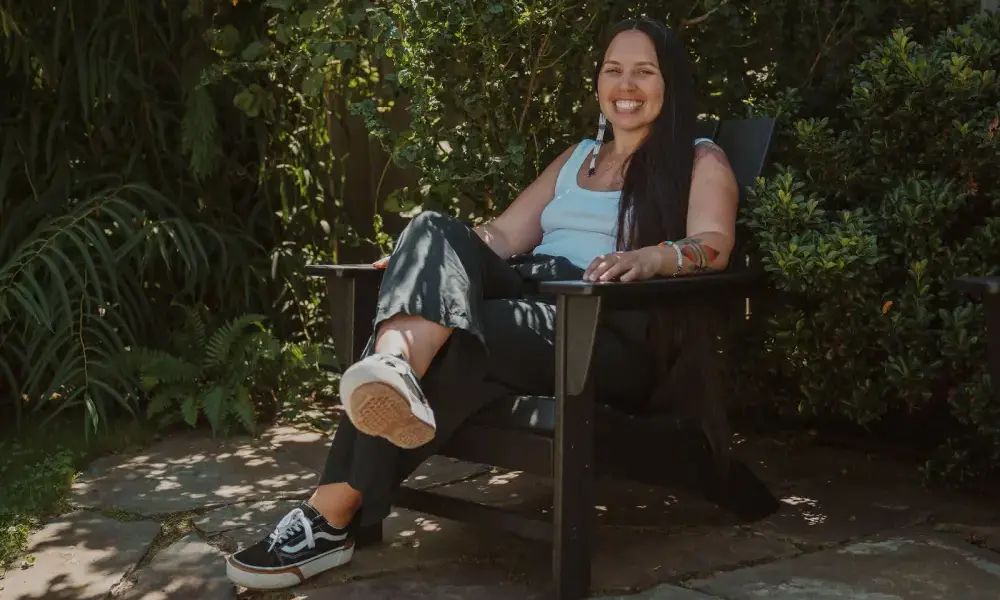
Indigenous Lactation Counselor trainees craft traditional felt and beaded breasts filled with sacred medicines (left); Camie Goldhammer, founder of the program that has trained over 800 Indigenous Lactation Counselors across the United States, Canada, and Guam since 2017 (right). (Photos: Champs National; Jessica Lázaro Moss for Native News Online)
The transformative experience and the realization that no resources existed specifically for breastfeeding Native mothers inspired Goldhammer to create the Indigenous Lactation Counselor program in 2017. A year later, Goldhammer and Kimberly Moore-Salas (Dine) made history as the first Native women appointed to the board of the United States Breastfeeding Committee, a national coalition that works to promote and support lactation.
Goldhammer held the first Indigenous Lactation Counselor training in Alaska with 12 Inupiaq women; the second was held in Minnesota, where 50 Native women participated.
“From there, it just exploded,” Goldhammer said. Today, she and Moore-Salas have trained more than 800 Indigenous Lactation Counselors across the United States, Canada, and Guam.
During the training, participants make small felt and beaded breasts, which are stuffed carefully with sacred medicines, such as tobacco, sweetgrass, sage and cedar.
“If someone brings in local medicines that are used to help postpartum mothers with milk supply, sometimes those medicines are added in as well,” Sanchez said. “ But also,in these lessons when the content is very clinical, which many participants have a hard time just sitting and listening to, so folks can listen while they craft. It’s kind of like giving them something to fidget with, and helps with processing the information being presented.”
Beyond Formula: Reclaiming Traditional Feeding
One month after Montez gave birth to her firstborn, her infant son was diagnosed with failure to thrive. She was nursing around the clock, frequently in agony, but her son was just slightly over his birth weight. Her pediatrician gave her one directive: Go directly to the store and buy formula.
As Montez stood in an aisle at a Walla Walla, Wash. grocery store, gazing at shelves stacked with baby formula, she felt sad, frustrated and overwhelmed.
“I was standing there looking at all of these different formulas — there’s so many, how do you even pick?” Montez recalled. “They have all of these different claims on them; how do you know what is best? I started feeling this panic rising up. I was nursing around the clock, and I felt like a failure.”
Standing in the grocery aisle with tears running down her face, she called her midwife for guidance.
“She told me to take a deep breath and asked me if I would like extra milk — donor milk — from another parent,” Montez said. “I instantly was like, ‘of course.’ This was nothing I'd ever heard of, I would rather give my baby milk from a community member, instead of formula.”
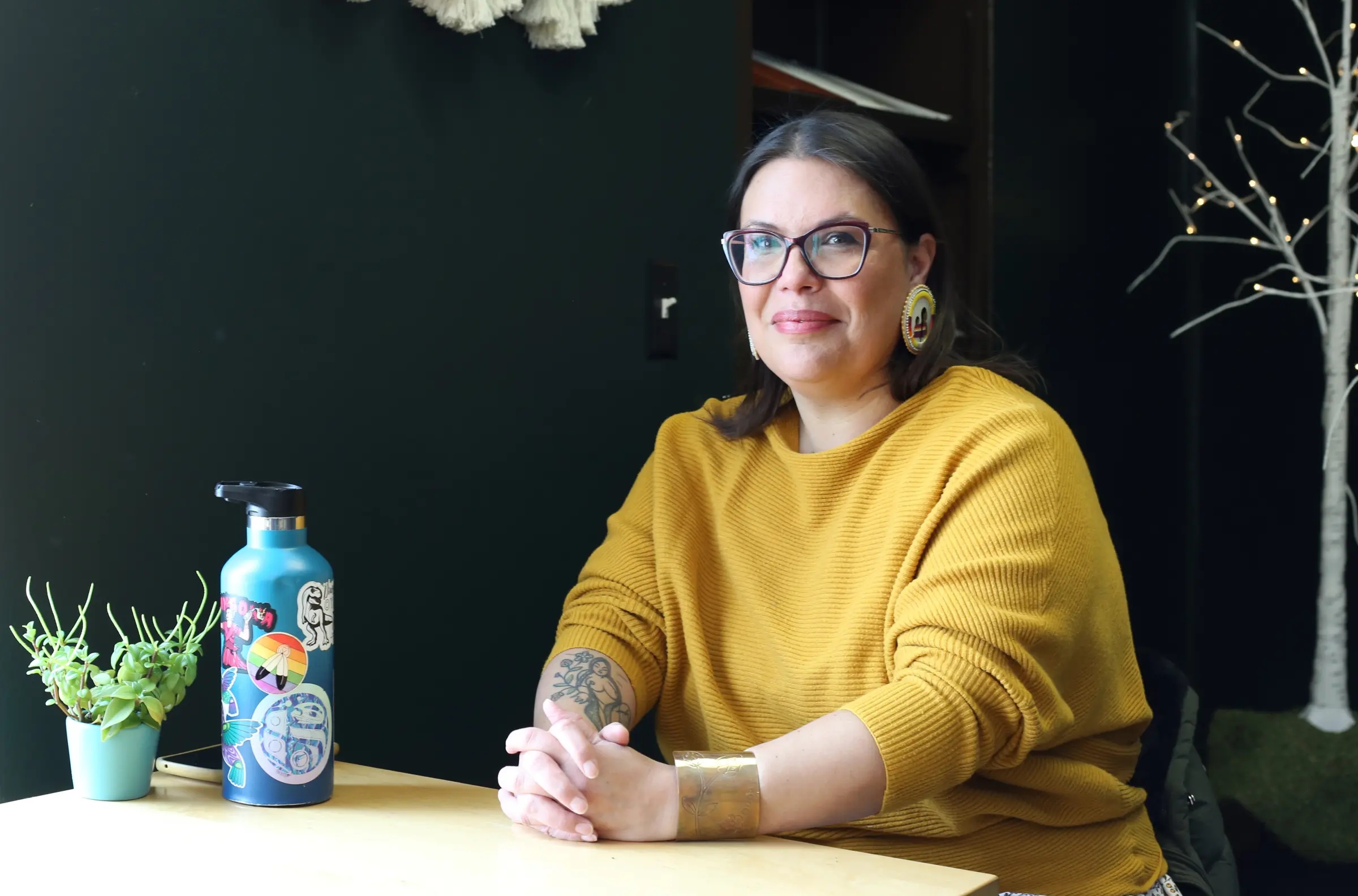
One month after giving birth, Elizabeth Montez stood in a Washington grocery store, overwhelmed by shelves of baby formula and feelings of failure. Her newborn had been diagnosed with failure to thrive, despite her constant nursing. In tears, she called her midwife — who offered an alternative she’d never considered: donor milk from another parent. (Photo: Elyse Wild)
While 28 donor milk banks exist in 25 states, a report by the Human Milk Banking Association of North America found that Native communities have limited access to this resource.
In Native communities, breast milk is the first food, and breastfeeding is one of life’s first ceremonies.
While some have an easy time breastfeeding, like Goldhammer, others face physical challenges—including tongue ties, clogged ducts, improper positioning when breastfeeding, stress and anxiety.
“Breastfeeding is a practice that we are taught,” Goldhammer said. “When breastfeeding doesn’t go well or doesn’t come quickly, you can feel like a failure, but most of these issues are pretty easy to solve. But if you don’t have support and are discouraged right away, it’s totally understandable why you would quit.”
Breast milk, Goldhammer reminds us, is a matter of supply and demand: once a baby stops nursing, the human body will stop producing milk.
“Traditionally, if we were having a hard time with it, we would have gone to our aunties or our mothers. But they haven’t breastfed in like four generations. That knowledge was taken from them, but it’s still there; it’s just been tucked away and buried. But it still lives in us. It was passed down to us from our ancestors. All we do in our training is bring it alive in our brains. We are just remembering again.”
Montez, who helped White through her pregnancy, has mastered both Indigenous and mainstream approaches to lactation support. She is one of nearly 800 Native women who completed Goldhammer’s Indigenous Lactation Consultant program, while also being among just 24 Native Americans — out of 19,000 total consultants — to earn the IBCLC certification. For her, breastfeeding helped heal intergenerational traumas, but she emphasizes that part of her role is supporting Native women whether they choose to breastfeed or not.
“I really want to uplift that choice,” she said. “If you are standing in your own autonomy and saying, ‘This is my choice,’ that, too, is ceremony.”
